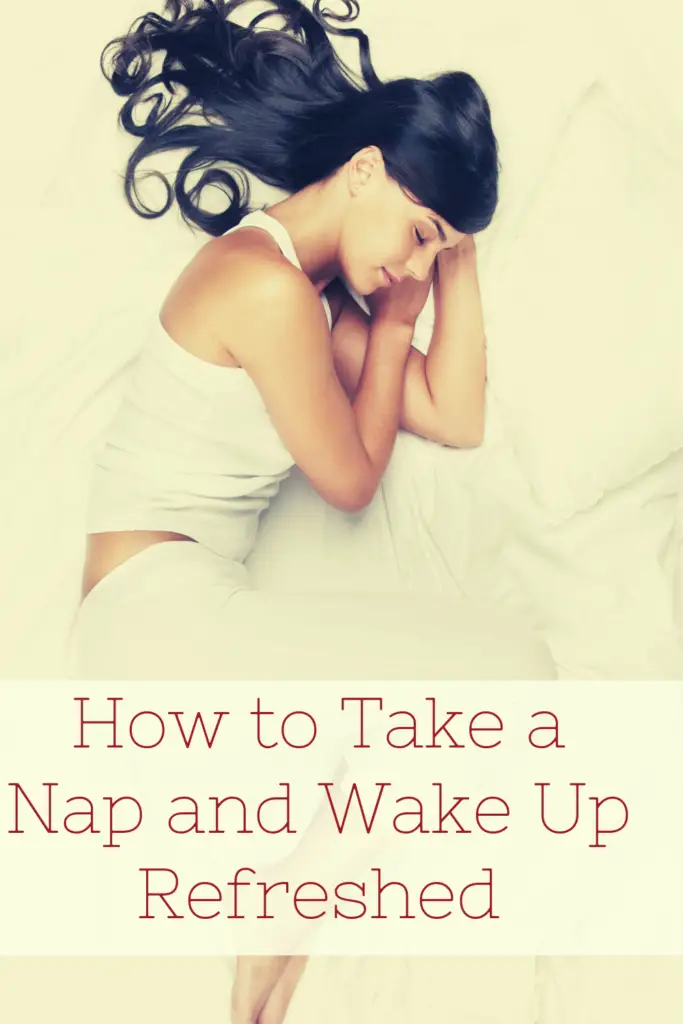Napping is supposed to help you feel refreshed, not tired. But sometimes taking a nap can leave you feeling sluggish and can make it hard to get back to your day. There are several things that can cause you to wake up tired after a nap and there are some tricks you can try to prevent this from happening.
Understanding the sleep cycle and how it affects your body is key to understand why a nap can leave you feeling tired. The stage of the sleep cycle you wake up in can often determine whether you will wake feeling refreshed or whether you will wake feeling tired. If you nap too long, it can cause you to wake up feeling more tired than before you went to sleep.
Learn to nap the right way so you can use naps to your advantage.
Table of Contents
Why do you feel tired after napping?
The main reason that people wake up from a nap feeling tired is they aren’t napping the right way. A long nap may sound nice in theory, but it’s actually a bad idea for most people. Naps should be short so you don’t get into deep sleep and wake up during that part of the sleep cycle. Waking during deep sleep means that your body will feel tired, possibly even more tired than when you went to sleep.
The natural inclination of the body is to stay asleep for hours once deep sleep is reached. A long nap interrupts your sleep and can also cause problems with falling asleep at bedtime.
What is Sleep Inertia?
Have you ever heard of sleep inertia? It affects most people in some way. Sleep inertia is when you wake up feeling tired, disoriented, and sluggish. For some people, sleep inertia is a constant thing that happens quite frequently or even every day. Other people may only experience sleep inertia after napping.
Sleep inertia occurs when your body is physically awake, but mentally, you still feel sleepy. It can negatively affect your mental state and keep you from being productive. Sleep inertia may tempt you into sleeping longer than you originally intended, which is a big no-no when it comes to napping. You’ll see how timing is the key to napping and waking up feeling refreshed as you read on.
Understand The Cycles of Sleep
If you want to nap successfully without waking up feeling groggy, you should understand the basics of how the sleep cycle works. According to the American Sleep Association, there are 5 basic stages of sleep. If you sleep long enough to make it to the deep sleep cycles, that can mean that you’ll wake up feeling more tired than when you went to sleep.
Interrupting some of the sleep cycles is disruptive both mentally and physically. That’s why naps should be kept under 20 minutes for most people.
Use Naps to Your Advantage

A well-timed nap can be very beneficial. Some people even build napping time into their daily routine. This can actually make you more productive if you do it the right way.
If you have a flexible schedule, it can be helpful to set aside 30 minutes or so each day to nap. On days that you aren’t physically tired, you can use that time to simply relax and rejuvenate in a way you find enjoyable.
One of the best ways to use naps to your advantage is to time them right. Think about when you feel most sluggish and decide which part of the day makes you most tired. For many people, late afternoon is the best time to nap. After lunch is when many adults struggle with motivation, both mentally and physically.
Napping not only helps your body rejuvenate but can also promote mental wellness. The key is to nap in a way that works for you. Most people should limit naps to a certain time frame. Look at your daily schedule and decide when naps would benefit you most. This can vary from person to person. Think about how you feel after a nap and decide if those few minutes of sleep are going to benefit your mental health.
Should Everybody Get a Nap?
Naps are great for some people and they can refresh the mind and help you move past things you may be struggling with. But some people just aren’t nappers. If you wake up after a nap and feel sad or depressed because you feel like you wasted time, then it might be best to find another way to unwind. For some people, the downsides of napping simply do not outweigh the upsides. If this seems to be the case for you, you may be better off just working on improving your night sleep.
Tricks to Avoid Bad Naps
A good nap should make you want to get up and return to your day. Whereas a bad nap can make you feel grumpy for hours after you wake up.
- It’s important to nap when you feel tired. Don’t use naps as a way to combat boredom. This can actually leave you feeling tired and even slightly depressed when you wake up.
- Nap in a quiet and comfortable spot where you can fall asleep quickly. I
- If you lay down to nap and aren’t able to fall asleep after around 10-15 minutes, it’s best to forgo the nap that day. Otherwise, you may feel like you wasted too much time trying to nap when you had other things to do.
- Getting enough sleep at night can also help you nap better during the day. A sleep-deprived body and mind will want to stay asleep longer during naps.
Napping Tricks for Parents
Having kids, especially young ones, can make you feel tired all the time. But a brief nap during a long day can help.
Sometimes, even when there are chores to be done, it’s best to nap when your child does. The dishes and laundry will still be waiting for you but at least after a nap you will feel better about accomplishing your tasks for the day. Plus, a short sleep during naptime can make you better able to interact with your kids without feeling tired and impatient as the day goes on.
Try to wake up at least 10-15 minutes before your child so you can have a quiet moment to wake fully and feel the energizing effects of your nap. Plus, this will give you time for a private bathroom break, a rarity for moms with little kids.
Learn to Power Nap

The art of power napping can help you get a boost of energy for the remainder of your day. If you can learn to power nap, you’ll be able to nap every day and you won’t feel tired after waking up.
Power naps have long been used by many famous and successful people and for good reason.
The basic premise of the power nap involves a quick nap that revives the mind and body. For most people, 15-20 minutes of sleep time is ideal for a successful power nap.
The right time of day is also important. Like previously mentioned, it’s usually best to nap in the afternoon.
A good power nap should take you from stage 1 sleep to stage 2 without going any further so you don’t reach deep sleep.
An odd tip that helps some people feel revived after a power nap is to drink a cup of coffee beforehand. Caffeine takes up to 45 minutes to take effect in the body so it can actually begin working soon after you wake up.
The Takeaway
If you feel napping is for you, bear in mind there is some strategy involved in napping the right way so you wake up feeling refreshed instead of tired. Be aware of sleep inertia and how the sleep cycles work. Try power napping and use these tricks and strategies to help you get more from your nap.
Also, remember that napping isn’t for everyone. Some people just don’t do well with sleeping during the day, even when napping is done correctly. And that’s totally fine. You can work on improving your night sleep or try some of the many other ways to relax during the day, such as massage, aromatherapy, bathing, or even journaling.
Listen to your body when it comes to napping. A good nap can make you feel great. But it can also make you feel lousy. Above all, you shouldn’t be waking up tired after your naps, and if you are, you should consider making some changes to your routine.


